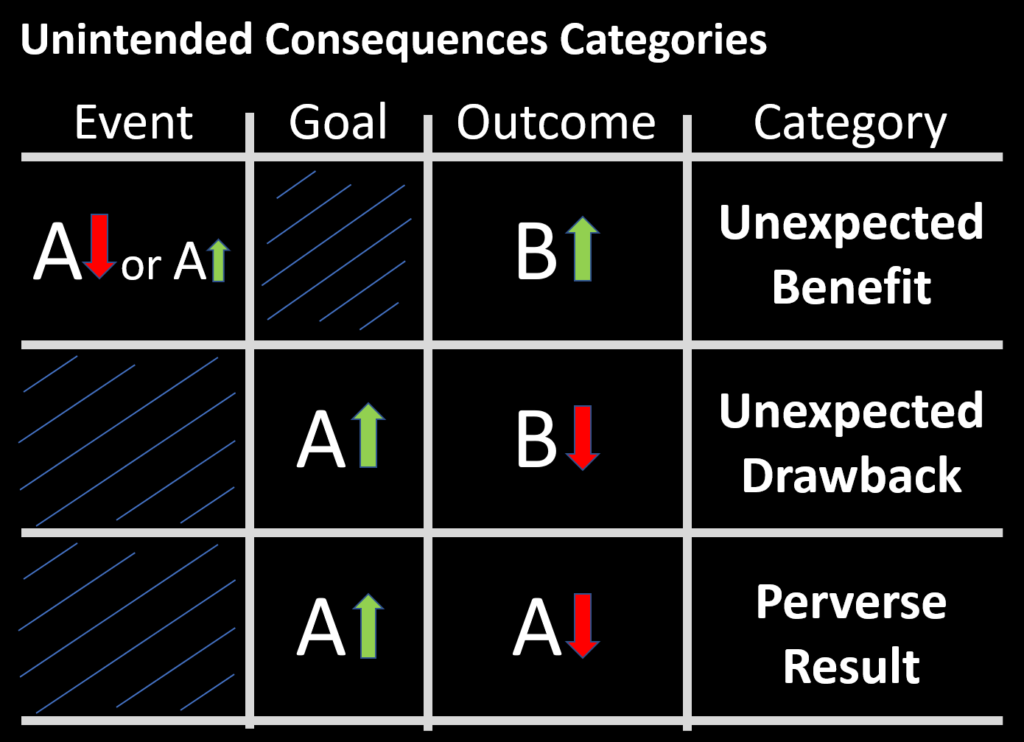There are many frameworks with which to evaluate unintended consequences. So far in my writing here I’ve looked at examples arranged around a theme (species introduction, food, government policy, human behavior etc) where there is a somewhat clear relationship between cause and effect (even if sometimes only in hindsight). I haven’t yet touched frameworks of complexity and won’t do so until I go deeper into more second-order effects.
This week I step back and look at basic categories of unintended consequences and call out potential new areas of exposure to second-order effects.
